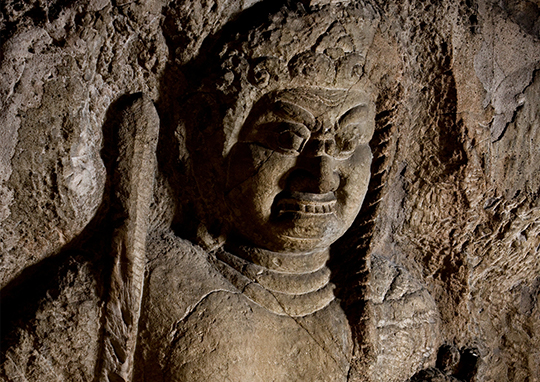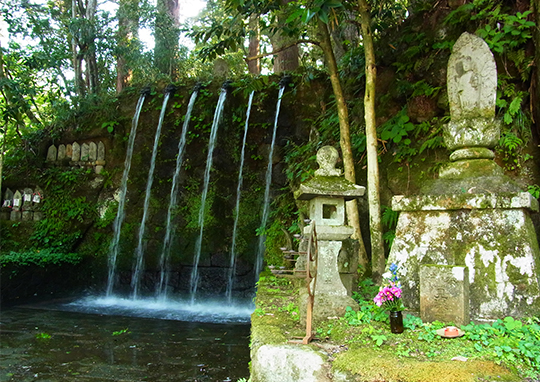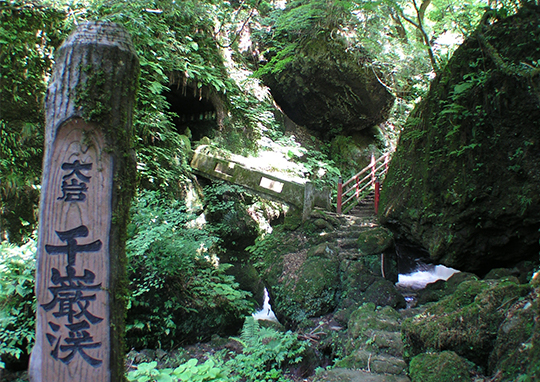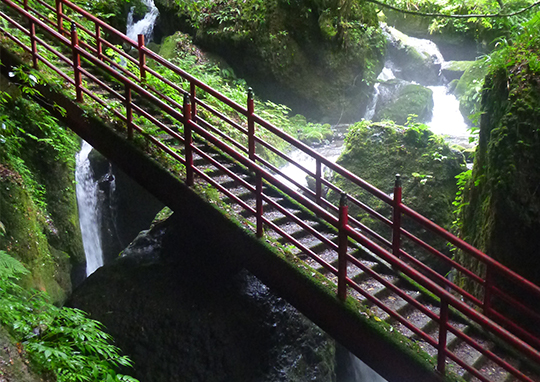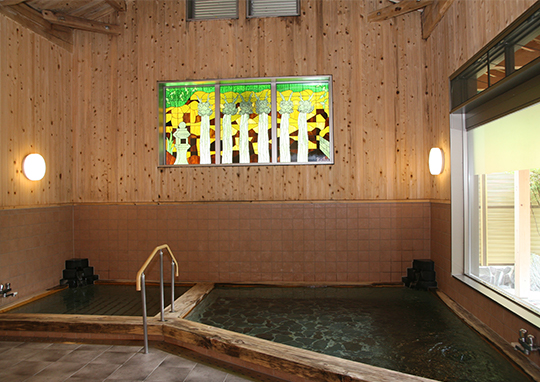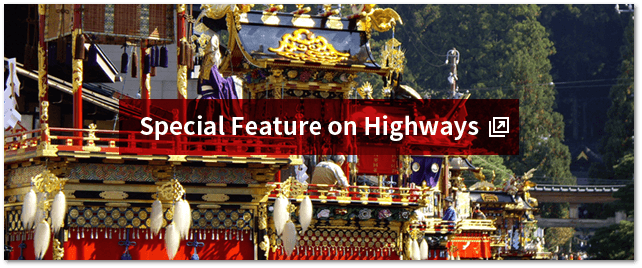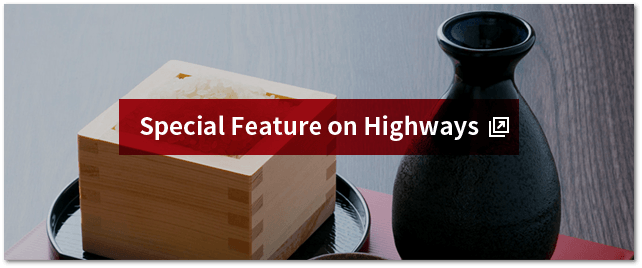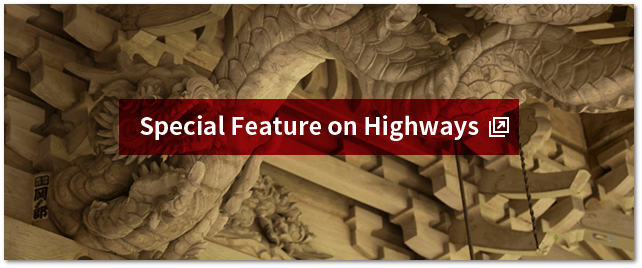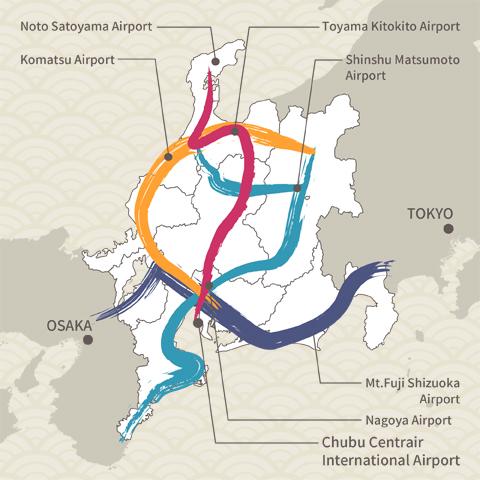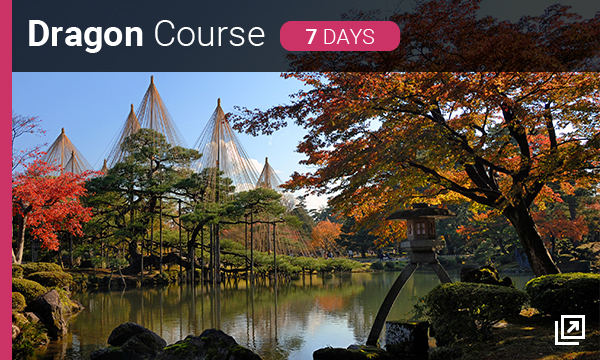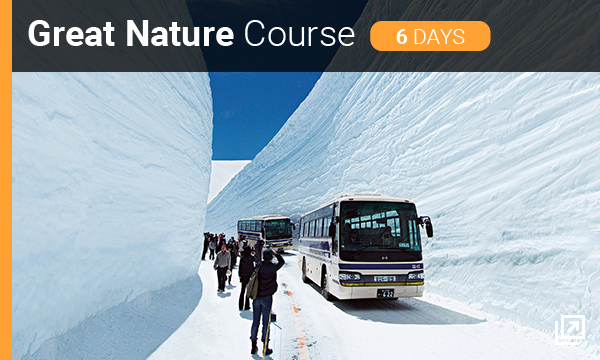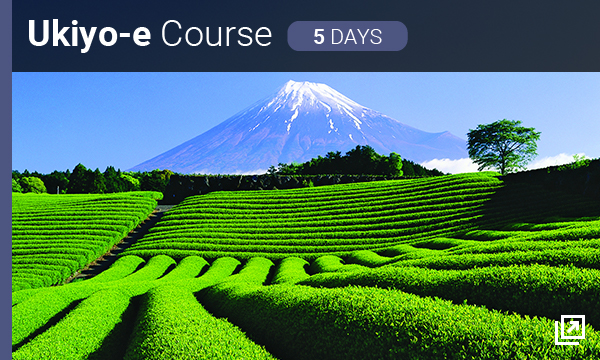Oiwasan Nissekiji Temple


Recommended activities and seasons


Enjoy Natural Scenery:Valley
Encounter History and Tradition:Historic building / Buddhist training
Relax in Onsens:Onsen

Spring / Summer / Autumn
Free yourself from worldly passions through winter training under a pounding waterfall!
The temple of Oiwasan Nissekiji is said to have its origin in the year AD 725, when the monk Gyoki carved a figure of the Buddhist deity Fudo Myo-o into a huge rock on the Oiwa River. The temple has drawn ascetic monks and worshippers since ancient times as a center for the worship of Mount Tateyama, and at its height, it was known as a major temple with 21 shrines and 60 monks. The principal images among the Oiwasan Nisseki Buddhist rock carvings include the figure of Fudo Myo-o (3.14 meters high), plus four other figures carved three-dimensionally into a massive boulder of volcanic tuff. The figures in bold relief on the rock face fascinate all who come to see them.
In January of each year, on the day known as Daikan (the coldest day) on the lunar calendar, a winter training ritual is conducted under six waterfalls on the grounds of Nissekiji. Anyone who has made a reservation can rent a white robe and experience the pounding of the waterfalls. The falls flow out from six spigots in the form of dragon heads and are said to purify a person’s mind and body by washing away the six desires and deeply rooted passions. Every year large numbers of people come to this sacred space, enveloped by nature, to have their minds and bodies soothed by the clear sound and intense power of the falling water.
Spend some time relaxing in an outdoor hot spring amid rocky mountain scenery.
Descend 130 meters from the six waterfalls to enter the ravine called Sengankei. Many of the large stones in the ravine have names, such as Imose-iwa, Tenku-ishi, Rodan-ishi, and Koitei-ishi, and they are perfectly placed. With visages like those of old hermits, they combine with the interweaving flows of pure water to create the scenery of the deep ravine. From the fresh greenery of spring to the colorful foliage of autumn, the ravine overflows with the hues of nature, creating a spot that can truly be called a hidden treasure.After strolling around the precincts of Nissekiji, consider a visit to the nearby hot spring called Oiwa Fudo no Yu. A natural hot spring where the water wells up from 1,500 meters underground, its slightly cloudy waters soak into one’s body ever so gradually. The building was constructed using ample amounts of local cedar and cypress, so the spring abounds with warmth and the aroma of wood. The bathing chamber itself features stained glass with Fudo Myo-o and Six Waterfalls designs. In the outdoor bath, you can pass the time relaxing as you relish the four seasons of the satoyama environment, replete with the singing of birds and the fragrances of trees.
Oiwasan Nissekiji Temple
Address |
163 Oiwa, Kamiichimachi, Nakaniikawa-gun, Toyama Prefecture |
Hours |
Office open until 4:00 pm |
Closed |
Open daily |
Cost |
Free entry; white robe rental, 300 yen |
Phone |
076-472-2301 |
Access |
By car from Toyama Chiho Railway Main Line Kamiichi Station, about 10 min |
Web site |
http://ooiwasan.com/home.html |


Other Spots

-

Kurobe Gorge

Toyama

Natural Scenery
Onsen
Exercise
Spring
Summer
Autumn
-
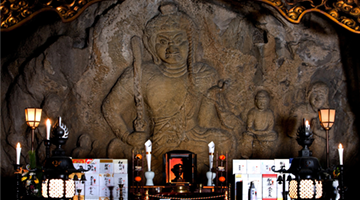
Oiwasan Nissekiji Temple

Toyama

Natural Scenery
History and Traditions
Onsen
Spring
Summer
Autumn
-
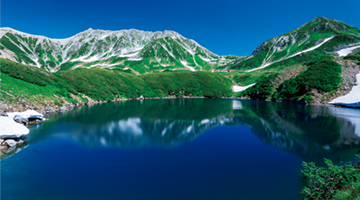
Tateyama Kurobe Alpine Route

Toyama

Natural Scenery
History and Traditions
Onsen
Exercise
Spring
Summer
Autumn
-
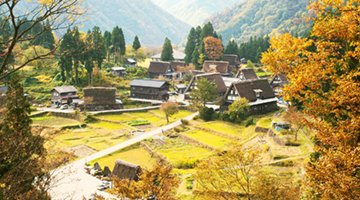
Gokayama

Toyama

History and Traditions
Spring
Summer
Autumn
Winter
-

Shirayama Hime Shrine

Ishikawa

Natural Scenery
History and Traditions
Exercise
Spring
Summer
Autumn
Winter
-
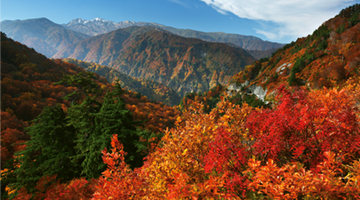
Hakusan Shirakawa-go White Road

Ishikawa

Natural Scenery
Exercise
Spring
Summer
Autumn
-
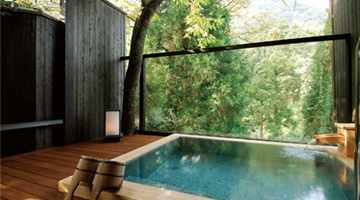
Kaga Hot Spring Village

Ishikawa

Onsen
Spring
Summer
Autumn
Winter
-

Eiheiji Temple

Fukui

History and Traditions
Spring
Summer
Autumn
Winter
-
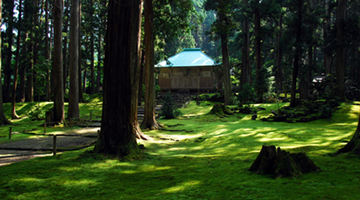
Hakusan Heisenji Shrine

Fukui

History and Traditions
Exercise
Spring
Summer
Autumn
-
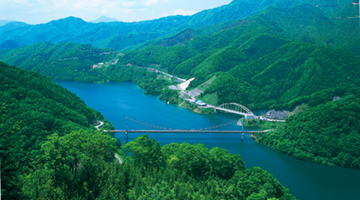
Lake Kuzuryu

Fukui

Natural Scenery
Spring
Summer
Autumn
-
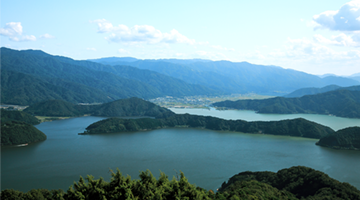
Rainbow Line Summit Park

Fukui

Natural Scenery
Exercise
Spring
Summer
Autumn
Winter
-
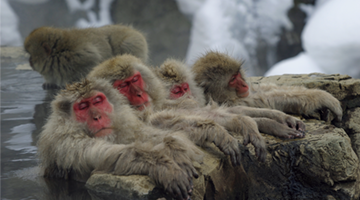
Jigokudani Yaen-Koen

Nagano

Natural Scenery
Spring
Summer
Autumn
Winter
-
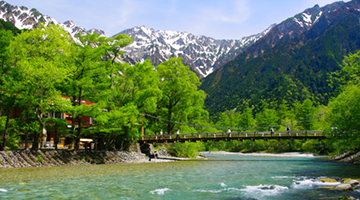
Kamikochi

Nagano

Natural Scenery
Exercise
Spring
Summer
Autumn
-

Togakushi Kodo

Nagano

Natural Scenery
History and Traditions
Exercise
Spring
Summer
Autumn
Winter
-
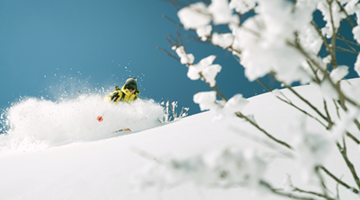
HAKUBA VALLEY

Nagano
-

Heavens Sonohara

Nagano

Natural Scenery
Exercise
Spring
Summer
Autumn
Winter
-

Akasawa Natural Recreational Forest

Nagano

Natural Scenery
Exercise
Spring
Summer
Autumn
-
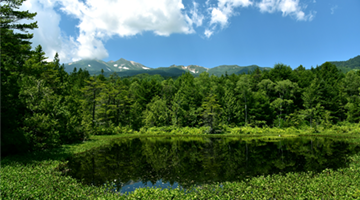
Norikura Highlands

Nagano

Natural Scenery
Onsen
Exercise
Spring
Summer
Autumn
Winter
-
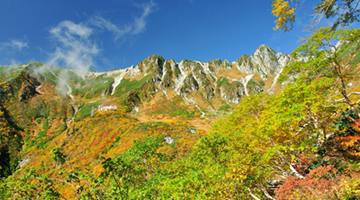
Senjojiki Cirque

Nagano

Natural Scenery
Exercise
Spring
Summer
Autumn
Winter
-
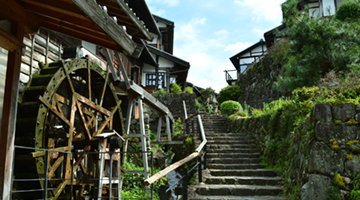
Magome-juku

Gifu

Natural Scenery
History and Traditions
Exercise
Spring
Summer
Autumn
Winter
-

The Waterfalls of Osaka

Gifu

Natural Scenery
Exercise
Spring
Summer
Autumn
Winter
-
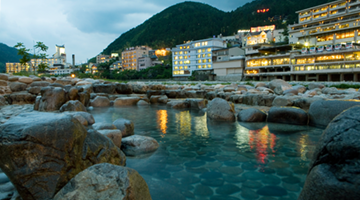
Gero Onsen

Gifu

Onsen
Spring
Summer
Autumn
Winter
-
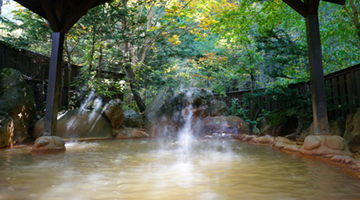
Okuhida Hot Spring Village

Gifu

Onsen
Spring
Summer
Autumn
Winter
-

Shinhotaka Ropeway

Gifu

Natural Scenery
Onsen
Exercise
Spring
Summer
Autumn
Winter
-
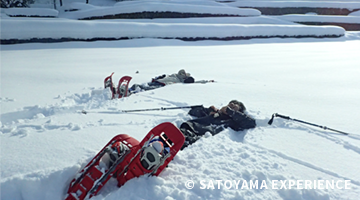
SATOYAMA EXPERIENCE

Gifu

Natural Scenery
Exercise
Spring
Summer
Autumn
Winter
-

Yoro Park

Gifu

Natural Scenery
Exercise
Spring
Summer
Autumn
Winter
-
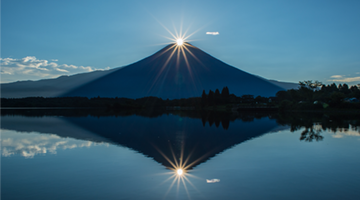
Mount Fuji

Shizuoka

Natural Scenery
History and Traditions
Exercise
Spring
Summer
Autumn
Winter
-
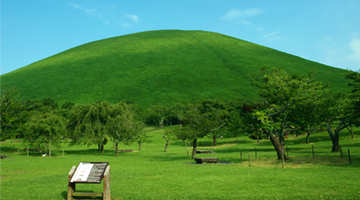
Izu Peninsula Geopark

Shizuoka

Natural Scenery
Exercise
Spring
Summer
Autumn
Winter
-
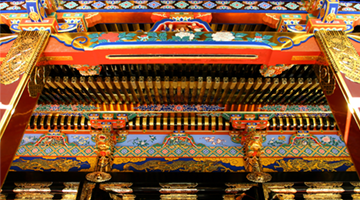
Kunozan Toshogu Shrine

Shizuoka

History and Traditions
Spring
Summer
Autumn
Winter
-
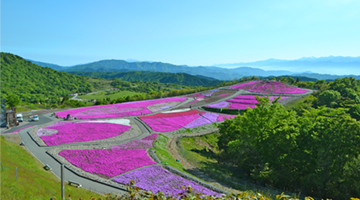
Chausuyama Highlands

Aichi

Natural Scenery
Exercise
Spring
Summer
Autumn
Winter
-
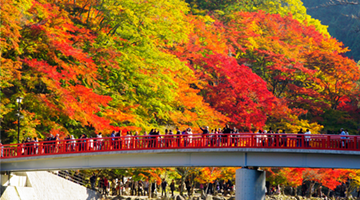
Korankei Gorge

Aichi

Natural Scenery
Exercise
Spring
Summer
Autumn
-
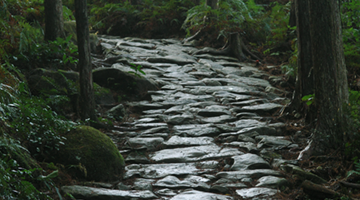
Kumano Kodo Pilgrimage Routes

Mie

Natural Scenery
History and Traditions
Exercise
Spring
Summer
Autumn
Winter
-

Mount Asama

Mie

Natural Scenery
History and Traditions
Exercise
Spring
Summer
Autumn
-
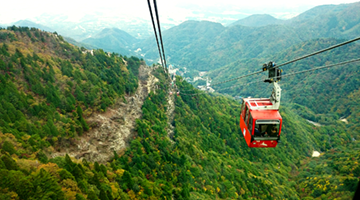
Mount Gozaisho

Mie

Natural Scenery
Exercise
Spring
Summer
Autumn
Winter
-
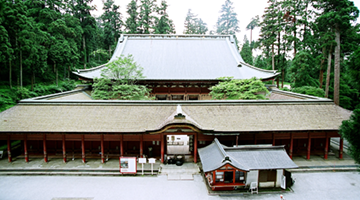
Enryakuji Temple on Mount Hiei

Shiga

History and Traditions
Spring
Summer
Autumn
Winter
-
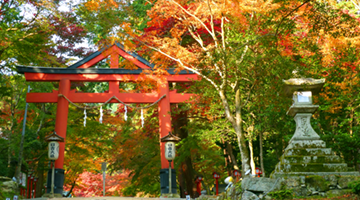
Hiyoshi Taisha Shrine

Shiga

History and Traditions
Spring
Summer
Autumn
Winter
-
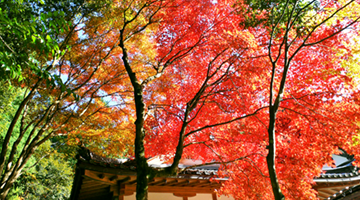
Kotosanzan

Shiga

History and Traditions
Spring
Summer
Autumn
Winter

See Other Routes

The Four Shoryudo Routes
















